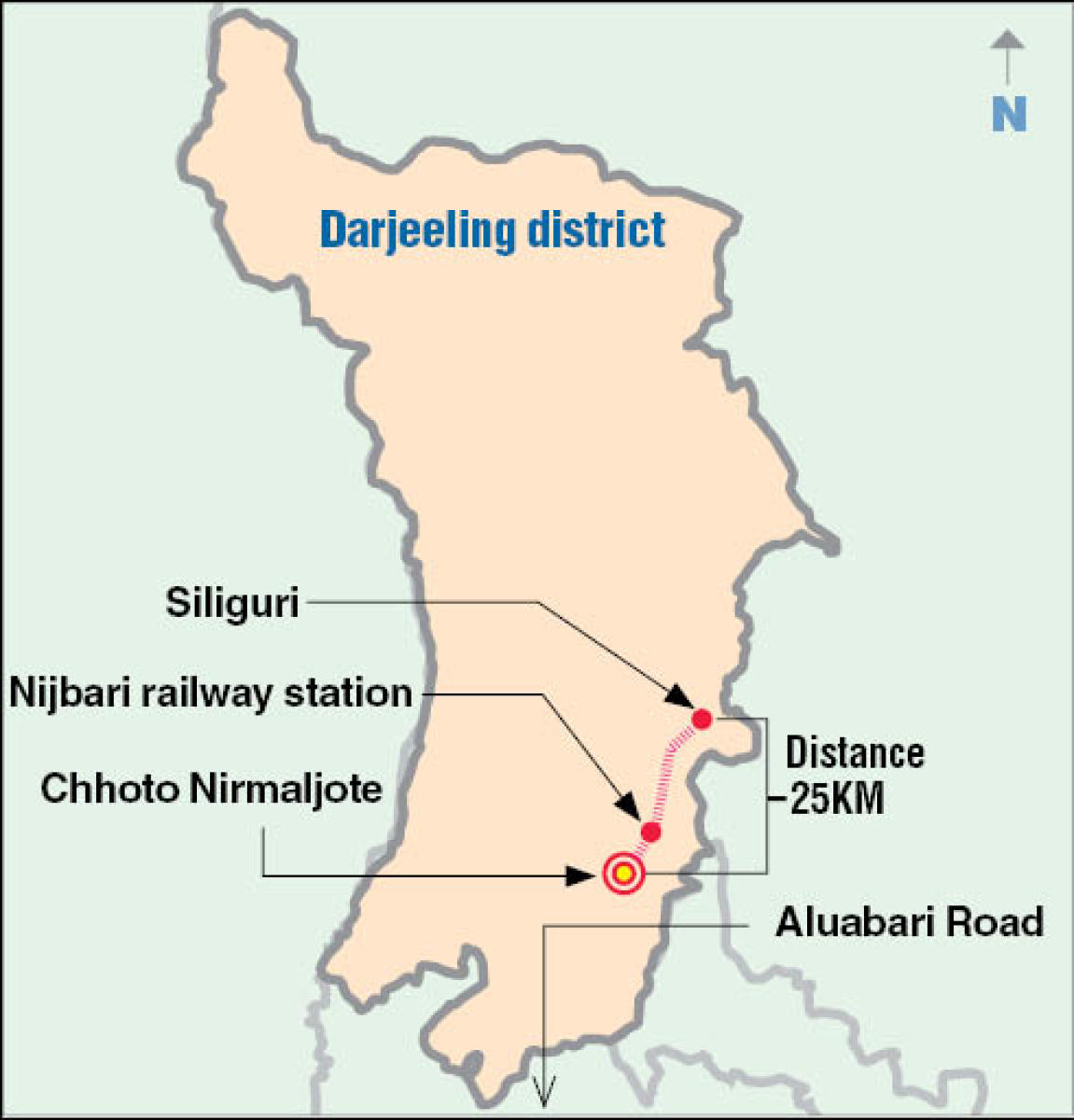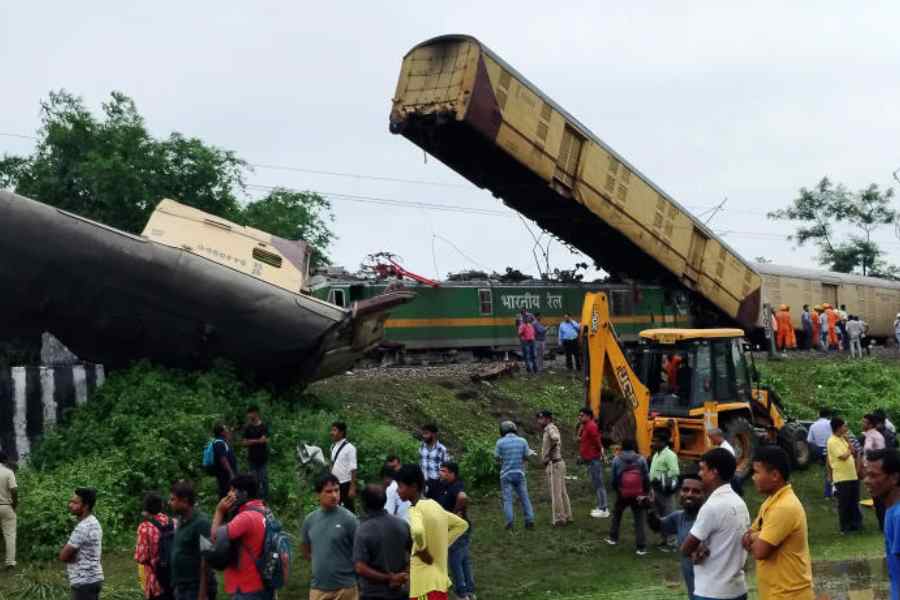At least nine people were killed and 41 others injured after the Down Kanchenjunga Express from Agartala to Sealdah was hit from behind by a goods train near Rangapani railway station here on Monday morning, amid initial suggestions of human error.
The driver and assistant driver of the goods train and the guard on Kanchenjunga were among those who died in the 8.55am disaster at Chhoto Nirmaljote village, about 10km from New Jalpaiguri railway station in the Katihar division of NF Railway.
Four coaches of Kanchenjunga, a popular train that connects Calcutta with north Bengal and the Northeast and was carrying about 1,300 passengers, got derailed. So were five wagons of the goods train, travelling between the Rangapani and Catterhat stations.
Till late evening, the railways had not officially revealed the speeds at which the two trains were travelling.
Manoj Dey, a resident of Bidhannagar in Calcutta, who was in a three-tier AC coach, B-1, with his wife and four-year-old daughter, said the Kanchanjunga Express was “moving slowly” when the accident occurred.
“The train was moving slowly. All of a sudden, I felt the train shaking and fell on the floor,” Dey said.
Multiple sources in the railways said the casualties were relatively low because Kanchenjunga’s rear was made up of the parcel coach and the guard’s coach.

“The passenger compartments were further ahead and suffered lesser impact. Else, the casualties would have been higher,” a source said.
People from a nearby village were the first to arrive. They rescued some of the injured and pulled out a half-dozen bodies.
Railway authorities, aided by the district administration, later took over the rescue operations, which were slowed by heavy rain.
The rescue teams initially avoided using gas cutters because that could have endangered the lives of those trapped inside the train.
The collision between two trains travelling on the same track and in the same direction immediately turned the spotlight on the absence of the anti-collision system, which the railways have for years been promising to install across the country.
Kavach, a made-in-India system to prevent train collisions, has not yet been installed on the tracks in Darjeeling.
Chief minister Mamata Banerjee, who happens to be a former railway minister, questioned the delay in installing anti-collision devices across the country.
“It is a fact that accidents are not in anyone’s control but it is also a fact that the anti-collision system is not being properly implemented,” Mamata, who rushed to north Bengal on Monday afternoon, said.
She did not visit the accident site. She went to the North Bengal Medical College and Hospital, where most of the injured have been taken, and met some of the victims.
She later headed to Cooch Behar, where she was scheduled to go on Tuesday.
Hospital sources said that none of those hurt had “grievous injuries”.
Railway board chairperson Jaya Verma Sinha hinted at human error in her initial reaction.
“Preliminary investigations suggest that the goods train driver disregarded the signal and hit the Kanchenjunga from the rear end,” Sinha said.
Asked about the railways’ failure to install the anti-collision system across the country, Sinha said work was to start soon on installing the system on the Delhi-Guwahati route, where the accident happened.
Opposition parties demanded railway minister Ashwini Vaishnaw’s resignation on moral grounds, citing Nitish Kumar’s resignation as railway minister in 1999 after a train accident at Gaisal in North Dinajpur killed 290 people.
Vaishnaw, who arrived at the accident site after holding an emergency meeting in Delhi, reacted by saying: “This is not the time for politics.”
He said an inquiry by the commissioner of rail safety had been initiated, and that treating the injured was now a priority.
“The focus right now is on the restoration of lines; the rescue operation has been completed. Let the (inquiry) report come out,” Vaishnaw added.
Around 1pm, the Kanchenjunga resumed its journey with the unaffected coaches, a railway official said. He added that food had been arranged for the 1,293 passengers at the nearby Aluabari Road and Malda stations.
By 5.40pm, the wreckage had been removed and the Up line restored. However, eight trains were cancelled and 37 diverted through the day.
Prime Minister Narendra Modi announced an ex-gratia of ₹2 lakh for the next of kin of each of the dead and ₹50,000 for each injured.
Vaishnaw announced an “enhanced ex-gratia” of ₹10 lakh for the dead, ₹2.5 lakh for the grievously injured (if any), and ₹50,000 for minor injuries.

